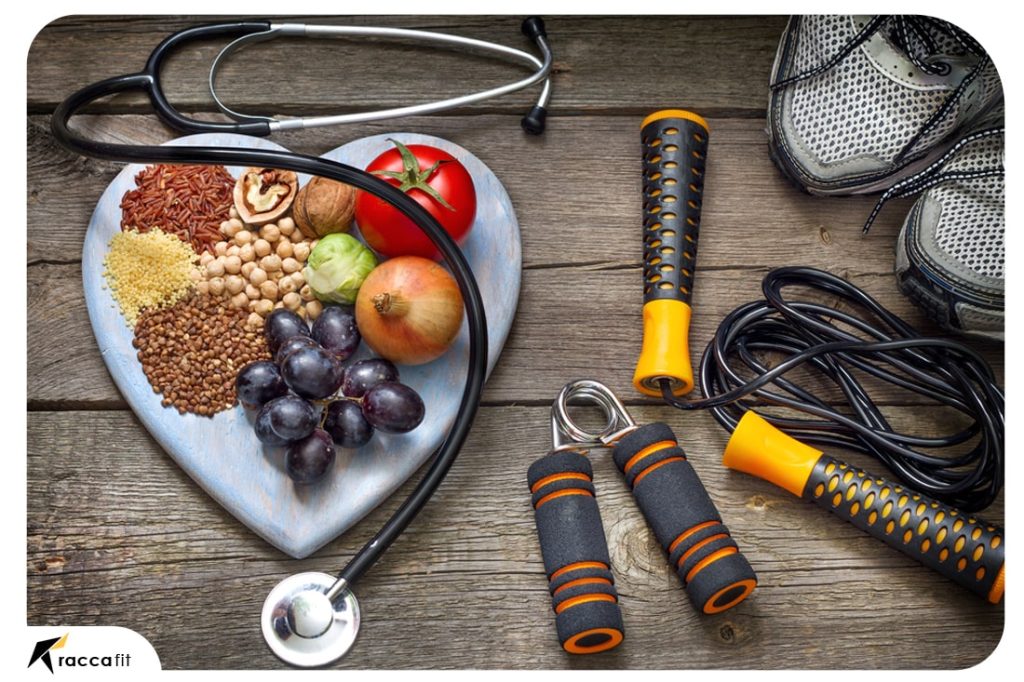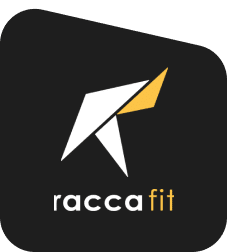what is a cardio exercise?
cardio training, also called aerobics or endurance training, is any form of activity that uses aerobic metabolism. So, during activity, oxygen plays a major role in the cellular reactions that generate the energy needed to sustain activity. Your heart rate increases, your breathing deepens, and the amount of oxygen in your blood maximizes, allowing you to use more oxygen efficiently. This will make you feel more energetic and will make you feel less tired quickly.
Aerobic exercise is vigorous activity that repeatedly and rhythmically works the body’s large muscle groups to increase heart rate, respiration, and increase oxygen and blood flow throughout the body. Such activity gradually stresses the major internal organs, improving the function and performance of the heart, lungs and circulatory system. Aerobic exercise improves many aspects of health, including heart health, mental health, mood, sleep, weight control, and metabolism.
In fact, every time your heart pumps oxygen-carrying blood, it becomes more efficient, your lungs take in oxygen more efficiently, and your muscles are able to use more oxygen. If you experience a strong urge to stop and rest, unusual pain, or any alarming symptoms as part of aerobic exercise such as walking, cycling, swimming, running, or climbing, stop immediately and seek medical attention must receive But for an exercise to be called aerobic, it must be at a moderate to vigorous intensity level (at least 50% of normal) for at least 10 minutes of heart rate and breathing rate.
For this reason, strength-building activities such as resistance exercise, using weight machines, lifting weights, and core training are not considered aerobic exercise because they do not increase heart rate throughout the exercise period.
Major categories
there are 3 major categories to cardio: high-impact cardio, low-impact cardio and no-impact cardio.

High-impact cardio
Aerobic exercise that lifts both feet off the ground at some point during the activity is called high-impact aerobic exercise. It’s also called a weightlifting exercise because you’re supporting your own weight on your limbs against the force of gravity. Examples include jump rope, high-impact aerobic dancing, and advanced strength training.

Low-impact cardio
A cardiovascular activity that involves keeping one foot on the ground. But don’t confuse low-impact aerobic exercise with low-intensity aerobic exercise. This is because many low-impact activities are high-intensity. Although it’s a high-impact exercise, low-impact aerobic exercise is great for maintaining healthy bones and toning your lungs and heart. Examples of low-impact aerobic exercise include walking, hiking, and low-impact aerobic dancing.

No-impact cardio
If you do aerobic exercise in water, the activity is considered ineffective because immersion reduces the gravitational force on your body. Therefore, swimming and water aerobics are aerobic exercises and have no effect. Cycling is also a low-impact aerobic exercise, as the bike’s tires and frame support most of your weight. Non-impact aerobic exercise like cycling or water aerobics eliminates most of the shock and impact associated with aerobic exercise on land, making it ideal if you have arthritis or are rehabbing an injury.
How to get the best outcome from the exercises?
For maximum benefit, you should do at least 3 days of aerobic exercise each week. For example, if you have more time on weekends, you can put his first two days on Saturday and Sunday and find another day in the middle of the week. So you don’t have to squeeze all your exercises into weekdays, but if it fits into your schedule, do it.
Aerobic exercise does not require long periods of time. When it comes to cardio, short workouts (just 5 minutes each) are just as effective as long sessions at the same intensity level and total cumulative training time. For example, 12 five-minute high-intensity cardio sessions are as effective as one 60-minute session. If you worry about a tight schedule, cardio is the way to go. You also don’t need any special equipment or a gym membership to do a lot of cardio.
We can help you to build a workout plan tailored to your goals, preferences, schedule, and available equipment in this page but for beginners, we recommend starting with low to moderate intensity activities such as walking, cycling, swimming, dancing, jogging, martial arts, inline skating, canoeing, golf, and water aerobics. This allows you to do them for a longer period of time and get more health benefits. But when choosing an activity, pick what you like.
Also, increasing intensity over time is more effective than increasing the amount or duration of activity. Nobody should overdo cardio. Spending hours at a slow to moderate pace won’t give you any more benefits. So once you’re able to do 30-45 minute activities 3-4 times a week, you need to step up and stick to high-level principles.

Eating for Endurance: How Nutrition Impacts Aerobic Performance
A robust aerobic performance relies not only on physical conditioning but also on the right fuel to power your body through the demands of cardio exercise. Understanding how nutrition plays a pivotal role in enhancing endurance can significantly elevate your fitness journey.
1. The Importance of Carbohydrates:
Carbohydrates are the primary source of energy during aerobic activities. Consuming complex carbohydrates, such as whole grains, fruits, and vegetables, provides a sustained release of glucose, supporting endurance by maintaining blood sugar levels. Learn how to strategically incorporate carbohydrates into your pre-workout meals to optimize energy availability during cardio sessions.
2. Balancing Proteins and Fats:
While carbohydrates take center stage, proteins and fats also contribute to a well-rounded nutrition plan for endurance. Proteins aid in muscle repair and recovery, crucial for sustained performance. Explore the right balance of lean proteins and healthy fats to enhance overall stamina and support the body’s long-term energy needs.
3. Hydration Strategies:
Adequate hydration is non-negotiable for optimal aerobic performance. Dehydration can lead to fatigue, decreased endurance, and impaired cognitive function. Discover the importance of pre-hydration, maintaining fluid balance during exercise, and effective post-exercise rehydration. Learn how incorporating electrolytes can enhance hydration levels, especially during prolonged cardio sessions.
4. Personalizing Your Nutrition Plan:
Every individual has unique nutritional needs. Understand how to tailor your nutrition plan based on your body type, fitness goals, and the specific demands of your cardio routine. Here we can provide you with a plan customized to meet your exact nutritional needs, keep an eye for any food allergies, and create a meal plan no matter the dietary requirement but consider consulting with a nutritionist or dietitian to create a personalized approach that aligns with your endurance objectives.
Conclusion
In conclusion, cardio exercise, also known as aerobics or endurance training, is a dynamic and impactful way to enhance overall health and well-being. Through the repetitive engagement of large muscle groups, increased heart rate, and optimized oxygen consumption, aerobic activities contribute to improved cardiovascular function, mental health, mood, sleep, weight control, and metabolism.
Understanding the three major categories of cardio—high-impact, low-impact, and no-impact—offers individuals diverse options to tailor their workouts based on preferences and physical needs. Additionally, recognizing the importance of intensity, duration, and consistency in aerobic exercise helps maximize its benefits.
Remember that cardio doesn’t necessitate extensive time commitments; short, focused sessions can be as effective as longer workouts. Whether you prefer walking, cycling, swimming, or other activities, the key is to choose what you enjoy and can sustain over time.
As you progress in your fitness journey, consider gradually increasing intensity for continued benefits. However, it’s crucial to listen to your body and prioritize rest if needed. Overdoing cardio or engaging in activities at an unsustainable pace may not yield additional benefits and could lead to fatigue or injury.
Embrace the flexibility of incorporating cardio into your routine, and remember that it doesn’t require special equipment or a gym membership. Whether you’re a beginner or an experienced fitness enthusiast, cardio offers a versatile and accessible path to improved health.
FAQs
1. How often should I engage in cardio exercise for optimal results? Aim for at least three days of aerobic exercise per week to experience the full benefits. Find a schedule that fits your routine, whether it’s consecutive days or spread throughout the week.
2. Can short cardio sessions be as effective as longer ones? Yes, short workouts, even as brief as 5 minutes, can be just as effective as longer sessions, provided they maintain the same intensity level. Consistency and cumulative training time are key factors in achieving cardio benefits.
3. Do I need special equipment for cardio exercise? No special equipment or gym membership is necessary for many cardio activities. Walking, cycling, swimming, and dancing are accessible options that require minimal or no equipment.
4. Can strength-building activities be considered cardio exercise? Strength-building activities like resistance training are not classified as cardio exercise, as they do not consistently elevate heart rate throughout the exercise period. Cardio activities focus on sustained rhythmic movements to enhance cardiovascular function.
5. How can beginners get started with cardio exercise? Beginners can begin with low to moderate intensity activities such as walking, cycling, swimming, or dancing. Choose activities you enjoy to make the experience more sustainable and gradually increase intensity over time. If in doubt, consult a fitness professional for personalized guidance.








